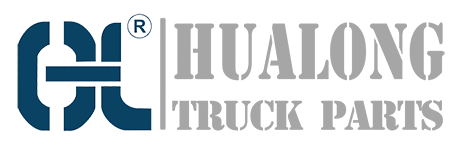A Comprehensive Overview of Pressure Relief Valve Diagrams
Pressure relief valves are essential components in many industrial and mechanical systems, designed to protect equipment and personnel from potentially dangerous overpressure situations. Understanding how these valves function is crucial for ensuring the safe and efficient operation of various systems. In this article, we will delve into the intricacies of pressure relief valve diagrams, exploring different aspects of their design and operation.
The Role of Pressure Relief Valves
Before diving into the details of pressure relief valve diagrams, it is important to grasp the fundamental purpose of these valves. Pressure relief valves are safety devices that automatically release excess pressure from a system when it exceeds a predetermined set point. Their primary function is to prevent catastrophic failures, such as explosions or equipment damage, by maintaining pressure within safe limits.
Anatomy of a Pressure Relief Valve
A pressure relief valve typically consists of several key components, each playing a vital role in its operation. These components include the body, bonnet, spring, disc, nozzle, and seat. The body serves as the main housing, while the bonnet provides a cover for the internal components. The spring applies force to the disc, keeping it closed until the system pressure exceeds the set point. The disc, nozzle, and seat work together to control the flow of fluid through the valve.
Understanding Pressure Relief Valve Diagrams
Pressure relief valve diagrams are graphical representations that illustrate the internal mechanisms and flow paths within these valves. They provide a visual guide for understanding how these valves function and how different components interact with each other. By studying these diagrams, engineers and technicians can gain insights into the valve's behavior under various operating conditions.
Key Components in Pressure Relief Valve Diagrams
Examining a pressure relief valve diagram, you will come across several important components that are crucial for its proper functioning. These components include the inlet, outlet, valve seat, disc holder, spring chamber, and the pressure adjustment mechanism. Each component has a specific role in regulating the flow of fluid and ensuring the valve operates within its desired pressure range.
Flow Paths in Pressure Relief Valve Diagrams
Flow paths depicted in pressure relief valve diagrams highlight the routes through which fluid travels during normal operation and relief situations. The diagrams showcase the primary flow path from the inlet to the outlet when the valve is closed. They also illustrate the emergency relief flow path, which bypasses the main flow path and allows fluid to exit the system when the pressure exceeds the set point.
Types of Pressure Relief Valve Diagrams
Pressure relief valve diagrams can be categorized into several types, depending on the level of detail and complexity they present. Basic diagrams provide a simplified representation of the valve's internal components and flow paths, offering a general understanding of its operation. Detailed diagrams, on the other hand, provide a more intricate view, highlighting smaller components and intricate flow paths.
Interpreting Pressure Relief Valve Diagrams
Interpreting pressure relief valve diagrams requires a good understanding of the symbols and notations used in these diagrams. Symbols such as arrows, circles, and lines represent different components and their connections. Labels and annotations are often used to provide additional information about specific parts of the valve. Familiarizing oneself with these symbols is essential for accurately interpreting the diagrams.
Common Challenges in Pressure Relief Valve Diagrams
While pressure relief valve diagrams are invaluable tools for understanding valve operation, they can sometimes present challenges. One common challenge is the complexity of diagrams for larger and more intricate valves, which may require a deeper level of technical knowledge to interpret accurately. Additionally, variations in diagram styles and notations across different manufacturers can also pose challenges for individuals familiar with specific conventions.
The Importance of Pressure Relief Valve Diagrams
Pressure relief valve diagrams are crucial resources for engineers, technicians, and anyone involved in the design, installation, or maintenance of systems that incorporate these valves. By studying these diagrams, professionals can ensure the correct selection, installation, and operation of pressure relief valves, leading to enhanced safety and efficiency in industrial processes.

